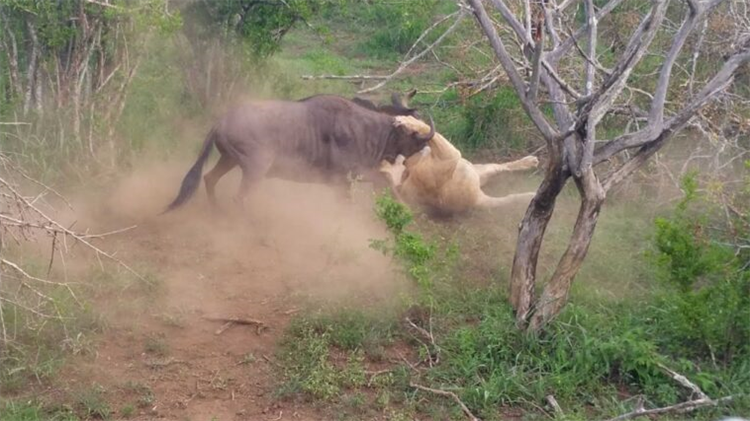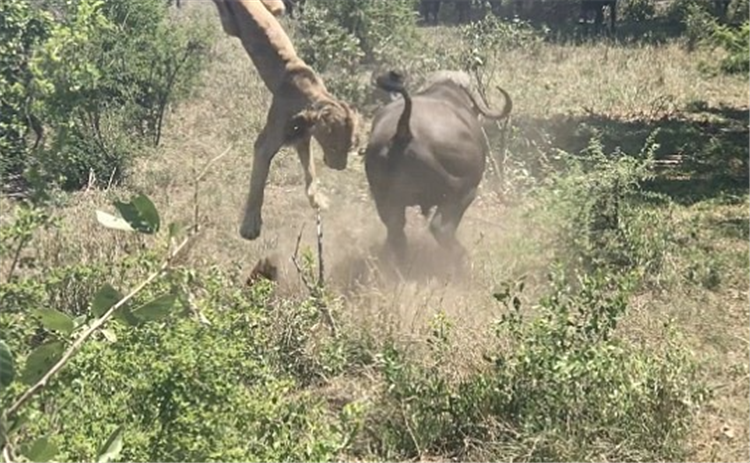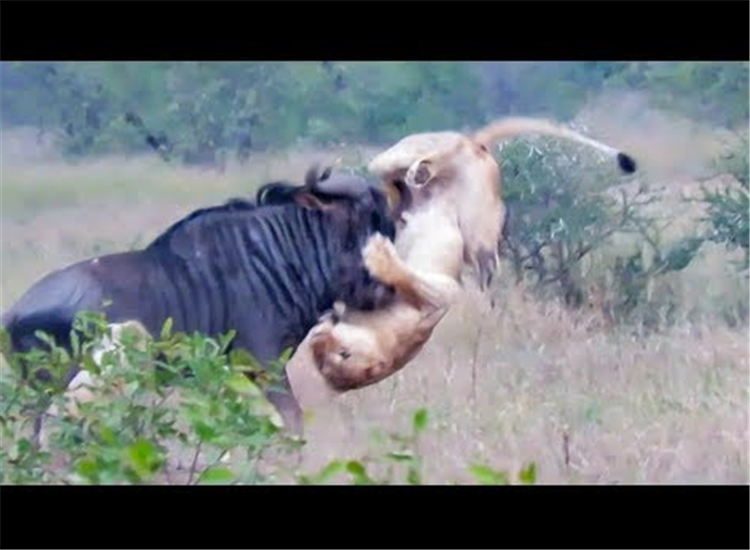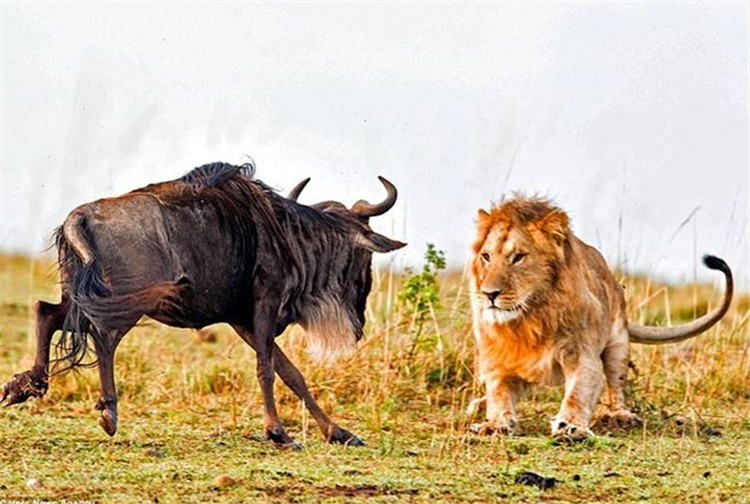A prime example of predator-prey interaction in the African savanna is the fight between the wildebeest and the lion. Herbivorous wildebeests move through the grasslands in vast herds in search of food and water. On the other hand, lions are the top predators and live in social groups called prides.
A lion pride will start stalking a herd of wildebeests the moment they spot them. Together, the lions separate one wildebeest from the herd before launching a planned attack. But wildebeest are not simple to plow. They can use their “to” to defend themselves and are quick runners.
A lion pride will start stalking a herd of wildebeests the moment they spot them. Together, the lions separate one wildebeest from the herd before launching a planned attack. But wildebeest are not simple to plow. They can use their “to” to defend themselves and are quick runners.

The wildebeest frequently disperse during an attack, making it challenging for the lions to concentrate on a single target. The wildebeest must then be captured and taken down by the lions in a group. The wildebeest fights for its life during the fight, which can linger for several minutes as the lions cooperate to get beyond the animal’s defenses.
The wildebeest occasionally manage to escape the lions and re-join the herd. Sometimes the lions are successful in removing their prey and partaking in a meal. In either case, the fight between the wildebeest and the lion is evidence of the ecosystem’s inherent equilibrium and the unadulterated might of the African savanna.
Dramatic video recorded in the Maasai Mara National Reserve (Kenya) shows a tenacious wildebeest fighting for life with both hyenas and lions.
The video opens with the antelope being attacked, surrounded by hyenas, and biting its teeth into its tail. When the battle was still not over, in the distance a male lion and a female lion suddenly approached. Noticing the appearance of the “natural enemy”, the hyenas immediately ran away, leaving the wildebeest behind.

At this point, the antelope has plenty of time to run away towards its herd. However, the animal chose to attack the lion with sharp horns. Due to underestimation of the enemy’s abilities, the antelope was quickly defeated by the pair of lions in a moment.
The lioness shows that she is a highly skilled hunter, when she actively rolls to the ground, then embraces her prey in a lying position. This attack helps lions both dodge deadly stabs and hooks, but can immediately approach the prey’s fatal weakness – the pharynx. While the female lion grabbed the antelope by the neck, the male lion with his strength, pounced from behind, causing the animal to fall limply to the ground.
The hunt ended quickly thanks to the lion’s methodical tactics and extremely effective attacks, helping them to defeat large-sized prey.

The lioness swings on top of a wildebeest, while biting its nose to suffocate the animal (Image: Pinterest).
Despite being classified as endangered on the IUCN Red List since 1996 and seeing a population decline of about 43% since the early 1990s, lions still show that they are the dominant predator on the grasslands of Europe. Fly.
Dubbed “king of the jungle” or “king of beasts”. Lions often defeat their enemies thanks to the difference in body shape, when males weigh up to 250 kg, and females up to 182 kg, the second largest of the Cat family after the Northeast Asian tiger.
In addition, lions often take advantage of the majority advantage, when their targets are herbivores, or single mammals, separated from the pack for easy hunting. As a result, they can easily take down large animals, such as plains zebras, wildebeest, wild buffalo, Gemsbok antelope, giraffes, adult hippos, and even adult hippos. Even the African bush elephant.

When acting alone, they will seek out smaller prey, such as antelope (Connochaetes), antelope (family Bovidae), gazelle (genus Gazella), hare, African horned pig (Phacochoerus africanus). .
Lion hunting usually doesn’t take long and is very effective. When hunting alone, they kill their prey by biting the neck to break the neck or damage the circulatory system. When hunting in groups, lions can grip large prey while others bite the neck or suffocate prey by locking the victim’s muzzle, preventing them from breathing. Lions can also kill their prey by blocking their prey’s nostrils with their jaws, resulting in suffocation.
On average, lions can eat up to 30 kg of meat in one hunt. If they cannot consume all of their prey, they will rest for a few hours before continuing to eat. Even when eating prey, lions take advantage of their large numbers to protect their “meal” from scavengers such as vultures and hyenas.
